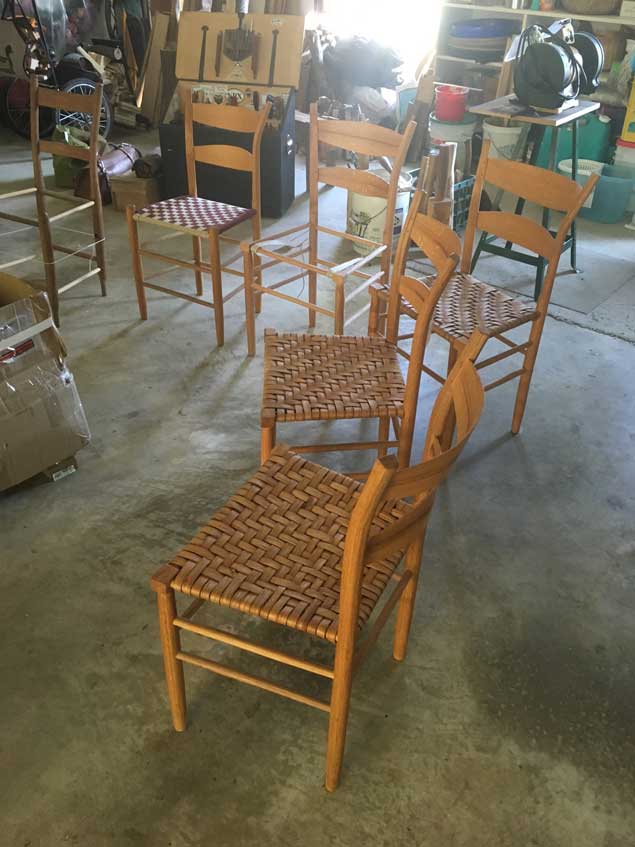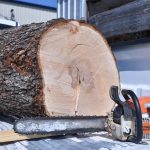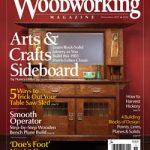We may receive a commission when you use our affiliate links. However, this does not impact our recommendations.
 For the next five days I’m in Maryland with four other friends to build a Jennie Alexander chair from Larry Barrett, a student and long-time friend of Alexander.
For the next five days I’m in Maryland with four other friends to build a Jennie Alexander chair from Larry Barrett, a student and long-time friend of Alexander.
Larry makes a chair that is 90 percent similar to Jennie’s iconic chair from her book “Make a Chair From a Tree.” Some of the details of Larry’s chair are a little different than Jennie’s – especially the front rung that is mortised onto the front posts.
This change to the front rung was at the request of Larry’s wife, Pong, who requested a chair that was more comfortable for people with shorter legs. The remainder of the chair, however, is nearly identical to Jennie’s.
Today we arrived at Larry’s home with our tools, a workbench and an extra shavehorse. Larry then spent about 30 minutes explaining his history with Jennie and the chair. He took a class with Alexander about 20 years ago, returned home and started making dozens and dozens of these chairs on his wooded property.
 Since that class, Larry has been helping Jennie work on her third revision of “Make a Chair From a Tree” to bring this classic book back into print. I am the editor of this book and need to know this chair inside and out – especially the way the tangential and radial planes of the wood affect the long-term durability of the chair.
Since that class, Larry has been helping Jennie work on her third revision of “Make a Chair From a Tree” to bring this classic book back into print. I am the editor of this book and need to know this chair inside and out – especially the way the tangential and radial planes of the wood affect the long-term durability of the chair.
As Jennie isn’t teaching classes anymore, I can’t think of anyone else I’d rather learn this from.
After Larry introduced us to this chair and its structure, he asked if we wanted to start building the chair a day early. We all jumped at the chance to begin using drawknives and planes to bring the front rung to size – it was also a great way to unwind after the 7-1/2-hour drive to Maryland.
Also, dinner at Dogfish Head’s Alehouse helped the unwinding.
Tomorrow we start making the front posts from rived oak.
— Christopher Schwarz
Here are some supplies and tools we find essential in our everyday work around the shop. We may receive a commission from sales referred by our links; however, we have carefully selected these products for their usefulness and quality.










I apologize for my lateness.I missed this Blog. I admire Larry Barrett’s craftsmanship and thank him for his excellent assistance with the Third Edition of Make a Chair from a Tree. However, his chair is not a Jennie Chair. The principal and crucial differences are:
Twelve rungs with flat ended tenons mate flat against the flat bottoms of 12 mortises. Thus all trauma to the chair is transmitted equally throughout the chair’s entire understructure. Rattle the chairs legs down on the floor and listen.
The chairs 6 side rungs are interlocked in place by the 6 front and rear rungs to prevent tenon withdrawal. Chairs receive maximum abuse in the fore and aft direction-always in sitting down to table and pushing back from it, next leaning back on the back legs. Do you remember Musical Chairs? Have you ever seen Baby Jerome tip the chair over frontwards, take the two raised back posts in his hands and push the chair about as his first walker. Look at the at a gorgeous old surviving chairs that have the front edge of their top front posts worn away. This is is but an introduction to abuse.
Comfort. If the Jennie Chair front posts concern. Make the seat wider.The Jennie Chair front rungs are quite open for legs and feet. My daughter Harper is 4’9 1/2″ tall. Her feet rest comfortably on the lowest front rung. She could not use the center rung. For the taller, the feet rest comfortably under the lowest front rung. If you could push you feet back further, you lose the support of the two back slats. You can make a taller chair.
I have attempted to extend the service life of a two slat post and rung chair. I hope it will have a long life and many adventures and challenges.
Hi Chris,
Will the new edition also include information on Larry’s modifications?
Thanks